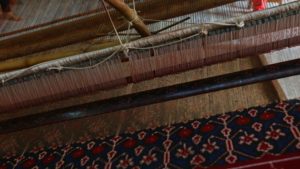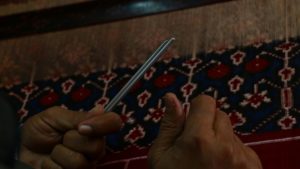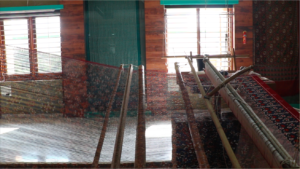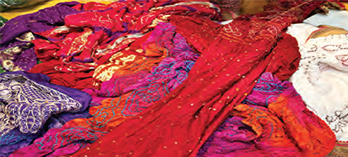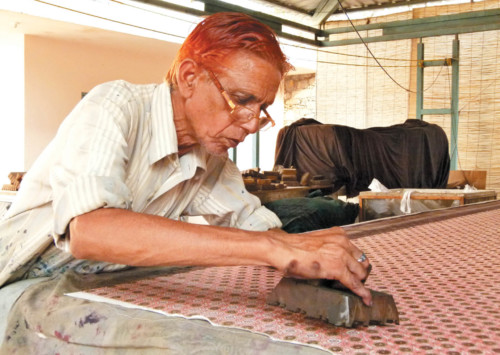Patan Ka Patola: A luxurious heritage fabric from Gujarat
The abundant variety of traditional textiles found in the Indian subcontinent includes patola or double ikat, from northern Gujarat, which is an extravagant and luxurious fabric.
The complexly woven fabric of patola is marked by its unique attributes of design, colour and appearance. With no reverse side, as patola makers would say, the fabric is aesthetically pleasing, resulting from the tedious nature of the process of making it. A visit to the Patola House in Patan, in the western Indian state of Gujarat, indicates that the intricate technique dates back to around the 12th century, when the Solanki Dynasty ruled over this part of what we know today as India. Gujarat is home to a handful of weavers who have kept this art, received in heirloom, alive even today through 30 generations, which includes the Salvi family, who have now established a Patan Patola Heritage Museum.
“The family has been involved in this art of fabric making for centuries. This double ikat, patola saree has a design made by hand and not print,” said a member of the Salvi family running the Patola House. Explaining the unique method by which the fabric takes colours, he stated, “Each thread is dyed before weaving; it may be called an opposite or reverse process to the conventional way of say, dying a shirt, whose fabric is dyed after the garment is made.” An ancient fabric, the history of patola is steeped in luxury and opulence. “When King Kumarpal got the 700 odd patola makers from Maharashtra and elsewhere to work under him, it was perhaps because he used a new fabric for prayer each time,” shared the weaver from the family, recalling a legend that is a shared belief among many of the weavers of the community.
Legends have grown around this old fabric, which is found mainly in Indonesia and Japan apart from these parts. The patola museum itself houses samples of the ikat technique based fabrics from places such as Uzbekistan. Interestingly, designs from and for the patola sarees have found themselves being carved into monuments such as the Rani ki Vav stepwell, a UNESCO World Heritage Site, which is located in Patan.
Grandeur in patola
A patola saree typically takes around four to six months to get completed, even with four weavers employed to the task, depending on the complexity of design.
Perhaps, this is the reason why places such as the Patola House offer sarees at whopping prices of EUR 2,100-5,600. A fabric with a royal past, it is accessible only for the royalty of today. Made in pure silk and with natural dyes, the fabric is an expression of elegance and expensive taste.
Unsurprisingly, the owners of patola sarees range from powerful politicians to famous film personalities. In the past, women such as former Indian president, Indira Gandhi and actress Kirron Kher have adorned this one-of-a-kind fabric. Bollywood star, Amitabh Bachchan reportedly paid a visit to the Patola House to place an order for a saree, which is only made on commission and rarely found ready to purchase. Even as there are cheap imitations of the fabric widely available in markets now, the decadent fabric, in its original form, is truly a symbol of elegance and splendour. It’s worth marvelling at.

